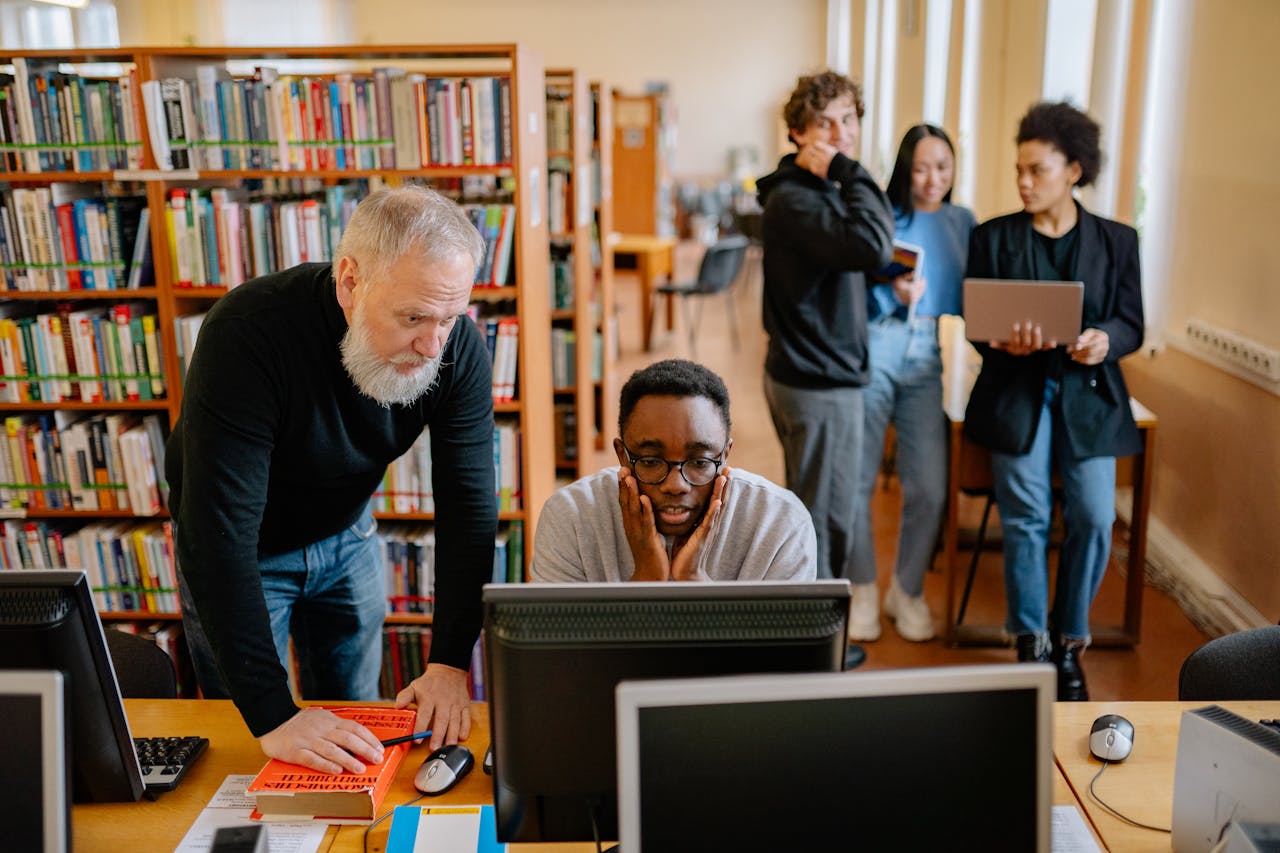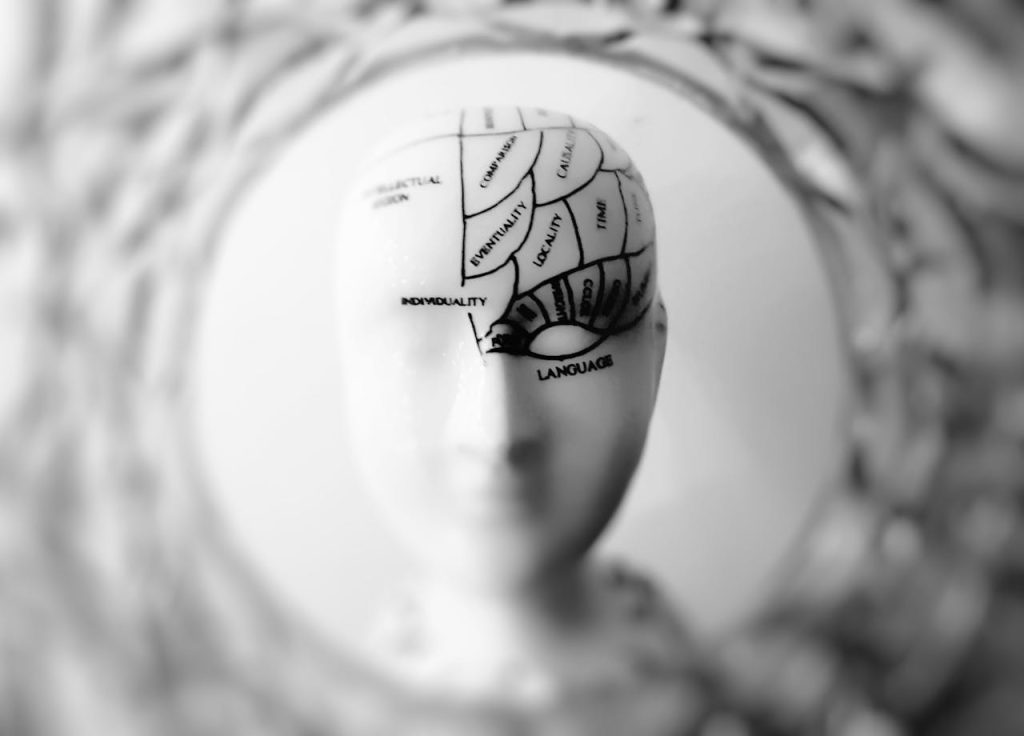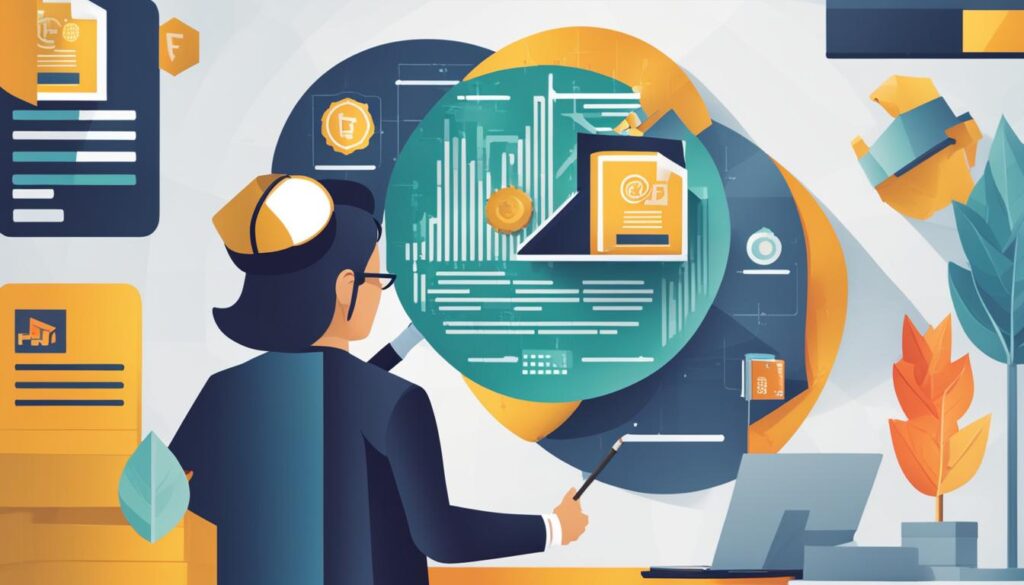Did you know your brain can create trillions of new neural pathways throughout your entire career? This isn’t just fascinating science, it’s a game-changer for workplace development.
Traditional training methods often fall short because they ignore our biological wiring. They don’t align with how our minds naturally process and retain information.
Educational neuroscience bridges this gap. It connects laboratory discoveries with practical applications for professional growth. This field shows how structured experiences physically reshape our brain networks.
We’re exploring how the neuroscience of learning and how it affects training transforms modern workplace development. Our brains remain remarkably adaptable, creating pathways well beyond childhood.
Throughout this guide, we’ll uncover evidence-based tools for designing effective programs. You’ll learn to align training with natural brain processes for better results.
Key Takeaways
- Our brains create trillions of neural pathways throughout our careers
- Traditional training often ignores biological learning processes
- Educational neuroscience connects research with practical applications
- Structured learning experiences physically reshape brain networks
- Aligning training with brain science improves knowledge retention
- Evidence-based strategies create more effective development programs
- Practical applications work for trainers without science backgrounds

Understanding How the Brain Learns
Mastering any skill involves a fascinating biological process within our minds. Our brains contain approximately 86 billion neurons creating an intricate network. This system gives us remarkable computational power for acquiring new capabilities.
Brain Processes Involved in Memory and Learning
Different regions handle distinct memory types. The hippocampus manages facts and events while the cerebellum oversees muscle memory. The amygdala processes emotional associations that strengthen retention.
Working memory acts as temporary storage for immediate details. The prefrontal cortex decides what information moves to long-term archives. This selection process ensures efficient use of our mental capacity.
The Role of Neuroplasticity in Skill Development
Neuroplasticity allows constant adaptation throughout life. Hebbian principles show that active neural pathways strengthen through use. Meanwhile, unused connections naturally prune away for efficiency.
This rewiring capacity continues well beyond early adulthood. Every experience physically molds our brain’s structure. Understanding these processes helps create training that works with our biology.
Research Insights on Brain Learning
Modern imaging technologies allow us to witness firsthand how specialized skills reshape neural pathways. These investigations provide concrete evidence that focused practice creates measurable changes in brain structure.
Key Neuroscience Studies and Findings
Groundbreaking research reveals fascinating patterns of brain adaptation. London taxi drivers develop larger hippocampi from navigating complex routes without maps. This spatial memory region grows with extensive use.
Juggling studies show remarkable plasticity in action. When participants practiced for three months, brain areas for motion perception expanded. After stopping, these regions returned to original size.
String instrument players demonstrate lasting neural changes. Their sensory cortex develops enlarged regions dedicated to left-hand fingers. Years of precise fingerboard work create this specialized wiring.
Analysis of Albert Einstein’s brain revealed exceptional connectivity. Dense neural pathways between hemispheres suggest enhanced communication. This finding highlights how intellectual gifts involve coordinated brain regions.
| Research Study | Key Finding | Brain Region Affected |
|---|---|---|
| London Taxi Drivers | Enhanced spatial navigation skills | Hippocampus enlargement |
| Juggling Practice | Temporary gray matter growth | Motion perception areas |
| String Instrument Players | Lasting sensory improvements | Sensory cortex specialization |
| Einstein’s Brain Analysis | Exceptional neural connectivity | Interhemispheric pathways |
These findings demonstrate that deliberate practice creates tangible biological changes. Understanding this research helps design programs that work with our brain’s natural adaptation capabilities.

Principles of Neuroplasticity in Training
Two fundamental concepts reveal why certain training approaches yield better results than others. These principles guide effective program design.
Hebbian Learning and Synaptic Connections
Hebbian learning explains how repeated experiences strengthen neural pathways. The phrase “neurons that fire together wire together” captures this process perfectly.
When brain cells activate simultaneously, their connections grow stronger. This biological mechanism forms the basis for habit formation and skill mastery.
Vygotsky’s Zone of Proximal Development Explained
Vygotsky identified the optimal balance between challenge and support. This sweet spot maximizes growth potential for each individual.
Modern research confirms that environmental conditions significantly impact brain development. The right balance activates our natural adaptation capabilities.
| Learning Zone | Challenge Level | Brain Response | Learning Outcome |
|---|---|---|---|
| Comfort Zone | Minimal | Stagnant neuroplasticity | Limited growth |
| Stress Zone | Overwhelming | Survival responses | Ineffective learning |
| Stretch Zone | Optimal | Active adaptation | Maximum development |
These principles create the foundation for brain-friendly training design. They respect both biological mechanisms and psychological conditions.
Neuroscience of Learning and How It Affects Training
Cutting-edge research shows that our minds have specific preferences for how they absorb new information. Traditional development programs often miss the mark because they ignore these natural processing systems.
Our brains prioritize salient experiences, those that feel relevant and emotionally resonant. Without meaningful connections, new skills fade quickly. This explains why boring sessions produce forgettable results.
Three core principles drive effective skill development. Repetition works best through spaced reinforcement cycles rather than cramming. Intensity means focused micro-challenges instead of passive lectures. Safety creates mistake-friendly practice environments over high-pressure testing.
| Training Approach | Traditional Method | Brain-Friendly Strategy | Memory Outcome |
|---|---|---|---|
| Repetition Style | Massed practice sessions | Spaced reinforcement cycles | Dramatically better retention |
| Challenge Level | Passive lecture absorption | Focused micro-challenges | Active engagement |
| Learning Environment | High-pressure assessments | Mistake-friendly simulations | Psychological safety |
These insights provide the foundation for designing programs that work with our biology. Knowledge sticks when we balance intellectual challenge with emotional security.

Implementing Brain-Friendly Training Methods
The timing of information review significantly impacts how well knowledge sticks in our minds. We’re translating cognitive principles into practical approaches that respect our natural memory rhythms.
Micro-Learning and Spaced Repetition Strategies
Breaking complex subjects into bite-sized chunks gives the brain time to consolidate information. This approach dramatically improves recall compared to marathon sessions.
Spaced repetition works with our natural memory cycles. Brief reviews at optimal intervals strengthen neural pathways more effectively than cramming. Research shows 70% of new information vanishes within 24 hours without proper consolidation.
Emotional Engagement and Memory Retention
Emotions shape how we absorb knowledge. When learners feel genuinely connected to material, their brain prioritizes storing it permanently.
Positive emotional states during practice trigger dopamine release. This chemical response cements information in long-term memory. Recent studies show emotionally charged lessons improve recall by 47% compared to neutral presentations.
These brain-friendly strategies transform training from forgettable events into memorable learning experiences.
Optimizing Cognitive Load in Training Sessions
Our cognitive systems operate with natural limitations that training programs must respect. Information overload represents one of the biggest challenges in professional development.
Working memory typically handles only 3-5 items simultaneously. Effective programs function like skilled editors, separating essential concepts from supplementary details.
Micro-learning proves particularly effective for managing cognitive load. Breaking complex subjects into bite-sized chunks gives the brain time to consolidate knowledge without overwhelming attention.
Visual aids serve double duty in this process. They convey information while reducing verbal processing demands, freeing mental resources for deeper understanding.
Managing cognitive load isn’t about simplifying content. It’s about strategic sequencing that allows adequate processing time before introducing additional complexity.
Watch for signs of overload like confusion, frustration, or reduced attention. These indicate when cognitive demands exceed optimal levels.
These optimization strategies ensure development remains in the productive stretch zone. Challenge promotes growth without triggering cognitive shutdown.

Harnessing Brain Reward Systems
The biological mechanisms that drive motivation are rooted in our brain’s reward circuitry. This ancient system evolved to reinforce behaviors essential for survival and achievement.
Dopamine’s Role in Motivation
Dopamine serves as both a powerful motivator and learning accelerator. When learners experience small wins during skill-building activities, this neurotransmitter strengthens neural pathways associated with success.
This creates positive reinforcement loops that sustain engagement. The brain releases dopamine when we complete effortful tasks, providing biological foundation for productive habits.
Balancing Immediate and Delayed Feedback
Modern training must address an evolutionary mismatch. Our reward systems evolved for delayed gratification but now face constant digital stimulation.
Effective programs balance quick wins with substantial achievements. Clear milestones and progressive challenges trigger healthy dopamine patterns.
These strategies sustain attention without creating dependency on external rewards. They help programs work with natural motivation systems.
Designing Inclusive and Adaptive Learning Environments
Creating spaces where everyone can thrive requires understanding diverse neurological needs. Approximately twenty percent of people process information differently than neurotypical individuals. These differences represent natural variations in brain wiring rather than deficits.
Creating Safe and Stimulating Spaces
Effective learning environments balance three essential elements. They provide physical safety, appropriate cognitive challenges, and emotional security. This combination supports optimal brain development for all participants.
Neurodivergent individuals often face unnecessary barriers in traditional settings. These include people with autism, ADHD, dyslexia, and other conditions. Adaptive approaches remove these obstacles without lowering standards.
Early adversity can significantly impact cognitive capacity. Stress activates survival mechanisms that hinder learning processes. Supportive environments help counteract these effects by reinforcing positive neural pathways.
Practical strategies include offering multiple engagement methods. Allow movement breaks and provide psychological safety where mistakes become growth opportunities. These approaches maximize each person’s potential.

Leveraging Technology and Visual Aids
Visual aids represent one of the most powerful yet misunderstood elements in modern training design. When used strategically, they enhance comprehension. Poor implementation creates distraction and cognitive overload.
These tools reduce verbal processing demands by engaging different neural pathways. This frees up limited working memory for deeper understanding. Strategic visual design transforms complex concepts into accessible formats.
Digital platforms have revolutionized information consumption patterns. Learners now access unlimited knowledge but face constant notifications. This environment fragments attention systems already taxed by digital overstimulation.
Well-designed tools support spaced repetition and multimodal engagement. They create sustainable pathways that respect brain processing limits. Poorly designed technology creates cognitive overload and shallow engagement.
| Technology Application | Effective Implementation | Ineffective Approach | Impact on Retention |
|---|---|---|---|
| Visual Aids | Diagrams clarifying relationships | Overly complex graphics | 47% improvement in recall |
| Digital Platforms | Spaced repetition algorithms | Constant notifications | Reduced focus capacity |
| Interactive Tools | Mistake-friendly simulations | Passive video lectures | Enhanced engagement |
| Feedback Systems | Progressive challenge levels | Immediate reward dependency | Sustained motivation |
Practical strategies include selecting aids that genuinely enhance comprehension. Flowcharts illustrate processes while infographics synthesize complex information. These approaches help rebuild sustained focus capacity.
We leverage technology’s strengths, accessibility and personalization, while mitigating weaknesses. The goal is creating tools that serve learning objectives rather than undermining them. Intentional design ensures digital resources support rather than fragment attention.
Case Studies from Modern Organizational Training
Real companies are achieving remarkable results by applying brain-based principles to employee development programs. These success stories demonstrate measurable improvements in retention, skill acquisition, and workplace performance.
Our analysis reveals programs using spaced repetition achieve 45% better retention than traditional methods. The timing of concept review proves crucial for memory consolidation.
Companies redesigning training around emotional engagement see 47% improved recall. Emotionally charged experiences create stronger memory pathways than neutral information delivery.
Forward-thinking organizations implement personalized challenge levels. They balance support with appropriate difficulty, accelerating skill development through optimal stretch zones.
Micro-learning approaches break lengthy modules into focused segments. This strategy increases completion rates and enhances on-the-job application of new skills.
Some companies even teach employees about their own cognitive processes. This awareness increases engagement and helps learners take ownership of their professional growth.
These case studies confirm that brain-aligned training delivers concrete business results. Organizations see reduced training time, faster skill mastery, and better workplace performance.

Integrating Educational Neuroscience in Curriculum Design
What if every lesson plan could be designed with the brain’s biological preferences in mind? Educational neuroscience bridges laboratory discoveries with practical classroom applications. This field helps educators create programs that work with natural cognitive processes.
Translating Research into Actionable Methods
Educational neuroscience serves as a vital connection between scientific research and curriculum development. It translates complex findings into practical strategies that educators can implement effectively. This interdisciplinary approach combines psychology, biology, and pedagogy.
We examine two complementary approaches in curriculum design. Neuroscience-informed methods teach in ways that align with brain function. Teaching about the brain itself promotes learner self-awareness and ownership.
Integrating these principles promotes motivation and engagement. Educators understand what naturally activates brain reward systems. This creates conditions for optimal growth and retention.
When learners understand their developing minds, they become more strategic. This metacognitive awareness transforms their approach to acquiring new skills. They take ownership of their educational journey.
These integration strategies ensure curriculum design respects biological mechanisms. Programs become more effective while remaining practical for diverse contexts. Brain science enhances rather than complicates teaching effectiveness.
Evidence-Based Practices from Recent Studies
Groundbreaking studies are uncovering how simple lifestyle factors dramatically influence our ability to acquire new skills. Our analysis examines cutting-edge research exploring relationships between physical conditions, mental states, and behavioral outcomes.
These investigations identify optimal conditions for neuroplasticity. Adequate sleep, regular exercise, and even air quality significantly impact brain function. Research shows insufficient rest impairs memory consolidation and reduces attention.
We explore the bidirectional relationship between education and cognitive health. Lifelong learning associates with better aging and reduced dementia risk according to developmental studies. This reveals how knowledge acquisition benefits long-term brain wellness.
Developmental approaches examine learning capacities across different life stages. Adolescence brings massive neuronal changes creating both potential and vulnerability. Multilevel measurements advance understanding of these critical periods.
| Factor Type | Positive Impact | Negative Impact | Practical Application |
|---|---|---|---|
| Sleep Quality | Enhanced memory consolidation | Impaired attention span | Schedule training after rest periods |
| Physical Activity | Improved cognitive function | Reduced mental energy | Incorporate movement breaks |
| Environmental Conditions | Optimal focus and retention | Cognitive overload risk | Ensure clean, well-lit spaces |
| Emotional State | Stronger memory pathways | Learning barriers | Create supportive environments |
These evidence-based practices provide educators with scientifically validated strategies. They move beyond intuition to methods grounded in rigorous research. Understanding individual differences helps tailor approaches for diverse learners.

Bridging Theory with Practical Application
Translating laboratory discoveries into practical training environments presents a significant challenge. Research often occurs in controlled settings, while real-world application involves diverse learners and complex situations.
We acknowledge this field is still developing. Some findings require further validation before widespread implementation.
Connecting Scientific Concepts with Real-World Training
We bridge this gap by linking core concepts to concrete methods. For example, synaptic strengthening connects directly to spaced practice schedules. Memory consolidation principles inform effective retrieval exercises.
This understanding helps educators make informed choices. They can confidently apply well-supported strategies while remaining cautious about newer ideas.
Empowering learners proves equally powerful. Simple guides, or “brain owner’s manuals,” explain memory formation and attention cycles. This knowledge transforms passive participants into active, engaged individuals.
They understand why certain neuroscience-based eLearning practices work. This metacognitive awareness fosters ownership of skill development. Our approach ensures training benefits from solid insights while maintaining appropriate skepticism.
Personalizing Training through Neurodiversity Awareness
One in five individuals processes information through neurodivergent pathways, challenging traditional one-size-fits-all training approaches. This diversity includes autism spectrum conditions, ADHD, dyslexia, and other neurological variations. These differences represent natural cognitive expressions rather than deficits.
Neurodivergent minds bring valuable strengths to development environments. They offer unique problem-solving approaches and intense focus capabilities. Understanding these advantages helps educators recognize different processing styles.
Tailoring Methods for Diverse Learning Styles
Flexible frameworks accommodate various processing needs. They remove barriers that force adaptation instead of genuine learning. This approach ensures all participants can engage their full potential.
Teaching about brain changes serves as powerful validation. When learners understand their unique wiring results from natural plasticity, they gain motivation. This knowledge helps them persist through challenging skill development.
| Traditional Approach | Neurodiversity-Aware Method | Impact on Learning |
|---|---|---|
| Single format delivery | Multiple information formats | Improved accessibility |
| Fixed timing requirements | Flexible pacing options | Reduced cognitive stress |
| Standard response methods | Varied expression modalities | Enhanced engagement |
| Neurotypical assumptions | Sensory-friendly environments | Better knowledge retention |
These personalized strategies create equitable access to development experiences. They honor the reality that cognitive diversity strengthens collective capabilities. Our brains thrive when training respects individual processing styles.
Future Trends in Neuroscience-Informed Education
The educational landscape stands on the brink of transformation through brain science discoveries. We’re exploring frontier research that could reshape how we approach knowledge acquisition.
Neurogenesis research reveals fascinating possibilities. The hippocampus generates approximately 700 new neurons daily throughout life. This continuous growth suggests untapped potential for cognitive development.
Lifestyle factors like exercise and stress management appear to boost this natural process. However, practical applications for enhancing memory remain uncertain. Researchers caution against overstating current findings.
Advanced imaging technologies promise real-time observation of knowledge consolidation. These tools may reveal hidden mechanisms in information processing. Such insights could lead to more effective teaching strategies.
Personalized approaches will likely dominate future educational models. Individual neurological profiles and genetic factors will inform custom learning paths. This moves beyond one-size-fits-all methods.
Artificial intelligence will analyze massive datasets to identify optimal conditions. Different brain types learn most effectively under various circumstances. Technology and research will work synergistically.
These trends point toward precision education grounded in deep understanding. We must maintain realistic expectations about implementation timelines. Evidence-based practice remains essential for meaningful progress.
Conclusion
Throughout this exploration, we’ve witnessed the remarkable adaptability of our minds across the lifespan. Our brains remain dynamic learning organs that continuously reshape through experience. This understanding transforms how we approach professional development.
We’ve discovered that effective training works with natural brain processes rather than against them. Strategies like spaced repetition and emotional engagement create stronger memory pathways. These methods respect how our minds actually process information.
Educators now have evidence-based tools to design programs that unlock every learner’s potential. From managing cognitive load to creating inclusive environments, these approaches honor neurodiversity. They balance challenge with support for optimal growth.
Looking ahead, emerging research will continue refining our understanding of learning mechanisms. As shown in recent developmental studies, this field holds exciting promise for personalized education. The future of training lies in strategies that respect our biological wiring while maximizing human potential.

This Article is Reviewed and Fact Checked by Ann Sarah Mathews
Ann Sarah Mathews is a Key Account Manager and Training Consultant at Rcademy, with a strong background in financial operations, academic administration, and client management. She writes on topics such as finance fundamentals, education workflows, and process optimization, drawing from her experience at organizations like RBS, Edmatters, and Rcademy.


